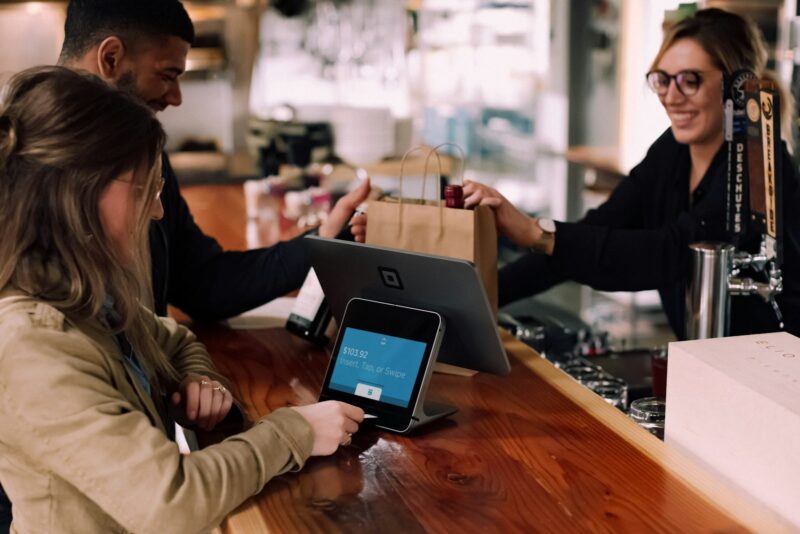
As we navigate the evolving landscape of payment trends, it is crucial to understand the emerging payment methods shaping the future. This section delves into the new technologies in payment systems and the adoption rates of innovative payment solutions.
Emerging Payment Methods
New Technologies in Payment Systems
In 2024, the payments industry trends are being revolutionized by technologies such as blockchain, AI-driven fraud detection, and real-time payment processing. These advancements are enhancing transaction speed, security, and transparency, making them attractive to both businesses and consumers.
Adoption Rates of Innovative Payment Solutions
Consumer payment trends indicate a growing preference for digital payment trends, including mobile wallets and contactless payments. According to recent data, the adoption rates of these innovative solutions have surged, with a significant portion of the population now using them for everyday transactions. This shift highlights the increasing trust and reliance on new payment processing trends.
Impact of Digital Wallets
Digital wallets have surged in popularity among consumers, driven by their convenience and security. According to recent data, over 60% of smartphone users have adopted digital wallets for everyday transactions. This trend is expected to grow, with projections indicating a 20% increase in digital wallet usage by 2024.
The integration of digital wallets with existing financial systems has been seamless. Major banks and financial institutions now offer digital wallet services, allowing users to link their bank accounts and credit cards effortlessly. This integration has facilitated smoother transactions and enhanced user experience.
Moreover, digital wallets are not just limited to payments. They offer a range of functionalities, including loyalty programs, ticketing, and even identification verification. This multifaceted utility is a key factor in their widespread adoption and continued growth in the payments industry.
- Over 60% of smartphone users utilize digital wallets.
- Projected 20% increase in usage by 2024.
- Seamless integration with major banks and financial institutions.
- Additional functionalities like loyalty programs and ticketing.
Consumer Preferences in Payment Options
Consumer payment trends are evolving rapidly, with a noticeable shift towards digital and contactless methods. The preference for digital wallets and contactless cards is growing, driven by convenience and speed.
Demographic Influences on Payment ChoicesDifferent demographics show varied preferences in payment methods. Younger consumers favor mobile payments and digital wallets, while older generations still rely on credit cards and cash. These trends highlight the importance of understanding consumer behavior to tailor payment solutions effectively.
- Digital wallets are popular among tech-savvy users.
- Contactless payments are preferred for their speed and ease.
- Credit cards remain a staple for older demographics.
Security Concerns in Payment Processing
Common Security Issues
Security remains a critical concern in the payments industry. Common issues include data breaches, phishing attacks, and fraudulent transactions. These threats can compromise sensitive consumer information, leading to financial losses and reputational damage for businesses. As payment methods evolve, so do the tactics of cybercriminals, making it essential to stay vigilant.
Measures to Enhance Payment Security
To mitigate these risks, several measures are being implemented. Key strategies include:
- Encryption of payment data to protect information during transmission.
- Adoption of multi-factor authentication to verify user identities.
- Implementation of tokenization to replace sensitive data with unique identifiers.
These measures help in safeguarding transactions and building consumer trust in digital payment systems.
Growth of Contactless Payments
The rise of contactless payments has been significant in recent years, driven by the need for convenience and hygiene. In 2024, the usage of contactless payments is expected to increase further, with more consumers and businesses adopting this technology. The benefits of contactless payments include faster transactions, reduced physical contact, and enhanced user experience.
However, there are challenges to consider. These include the need for widespread infrastructure upgrades and addressing security concerns. Despite these hurdles, the trend towards contactless payments is likely to continue, supported by advancements in payment processing technology and growing consumer demand.
- Increase in usage: More consumers are opting for contactless payments due to their convenience and speed.
- Benefits: Faster transactions, reduced physical contact, and improved user experience.
- Challenges: Infrastructure upgrades and security concerns need to be addressed.
Role of Cryptocurrencies
Cryptocurrencies are increasingly being adopted in mainstream transactions, reflecting a significant shift in the payments industry. Major retailers and service providers are beginning to accept digital currencies, driven by consumer demand for more diverse payment options. This trend is expected to continue growing in 2024.
However, regulatory considerations remain a critical factor. Governments worldwide are developing frameworks to manage the use of cryptocurrencies, aiming to balance innovation with security. These regulations will shape the future landscape of cryptocurrency adoption, influencing both consumer and business behavior.
Key points to consider include:
- Adoption in mainstream transactions
- Regulatory considerations
Trends in Mobile Payment Adoption
Mobile payment adoption continues to rise, driven by the convenience and security these platforms offer. Popular mobile payment platforms include:
- Apple Pay
- Google Wallet
- Samsung Pay
User demographics show a significant uptake among younger consumers, particularly those aged 18-34. This age group values the ease of use and integration with other digital services. Additionally, mobile payments are gaining traction in various regions, reflecting a global shift towards digital payment trends.
Influence of Buy Now, Pay Later Services
Buy Now, Pay Later (BNPL) services have seen a significant rise in consumer adoption. These services offer a flexible payment option, allowing consumers to split purchases into manageable installments without interest.
Key factors driving BNPL adoption:
- Convenience and ease of use
- Zero-interest payment plans
- Integration with major retailers
The impact on traditional credit systems is notable. BNPL services are attracting consumers who might otherwise use credit cards, leading to a shift in how people manage their finances.
Shift Towards Biometric Payments
Biometric payments are gaining traction as a secure and convenient method for transactions. Various types of biometric authentication are being adopted, including fingerprint scanning, facial recognition, and voice recognition.
Consumer Acceptance and Privacy ConcernsWhile many consumers appreciate the ease and security of biometric payments, privacy concerns remain a significant barrier. Ensuring data protection and addressing these concerns is crucial for broader acceptance.
- Fingerprint Scanning: Widely used in smartphones and payment terminals.
- Facial Recognition: Increasingly popular in mobile payments and retail settings.
- Voice Recognition: Emerging as a hands-free payment option.
Future of Payment Processing
As we look ahead, the future of payment processing is poised for significant transformation. One key trend is the rise of artificial intelligence and machine learning in fraud detection and prevention. These technologies will enhance security and streamline transactions, making payments faster and more reliable.
Another anticipated development is the integration of blockchain technology beyond cryptocurrencies. Blockchain can offer transparent and secure transaction records, reducing the need for intermediaries and lowering costs. Additionally, the adoption of biometric authentication methods, such as fingerprint and facial recognition, is expected to grow, providing a seamless and secure payment experience.
Moreover, the expansion of Internet of Things (IoT) devices will facilitate new payment methods. Smart appliances and wearables could enable automatic payments, enhancing convenience for consumers. As these technologies evolve, they will shape the landscape of the payments industry, driving innovation and efficiency.
FAQs: Payment Trends in 2024
What Are the Emerging Payment Methods in 2024?
New payment technologies include biometric authentication and blockchain-based systems. Adoption rates are rising, with positive consumer feedback.
How Are Digital Wallets Impacting Consumer Behavior?
Digital wallets are changing spending habits and integrating seamlessly with other financial services, enhancing convenience.
What Are the Security Concerns in Payment Processing?
Common threats include data breaches and fraud. Enhanced encryption and multi-factor authentication are key strategies for security.
How Is the Adoption of Mobile Payments Changing?
Mobile payments are growing rapidly, especially among younger demographics. Popular platforms include Apple Pay and Google Wallet.
What Is the Future of Payment Processing?
Expect advancements in AI-driven fraud detection and increased use of decentralized finance technologies in the coming decade.
Sources
- https://www.pewresearch.org/social-trends/2023/03/01/the-enduring-grip-of-the-gender-pay-gap/
- https://data.cms.gov/summary-statistics-on-use-and-payments/medicare-service-type-reports/medicare-telehealth-trends
- https://www.cms.gov/newsroom/fact-sheets/2025-medicare-advantage-and-part-d-rate-announcement
- https://www.cms.gov/data-research/statistics-trends-and-reports/national-health-expenditure-data/historical
- https://www.federalreserve.gov/paymentsystems/fr-payments-study.htm
- https://www.bls.gov/bls/wages.htm



